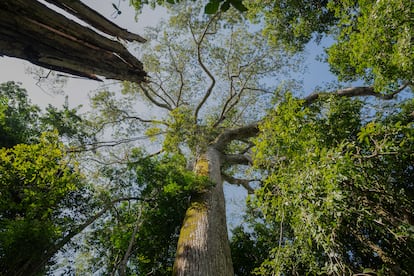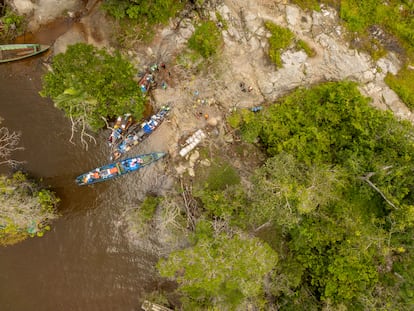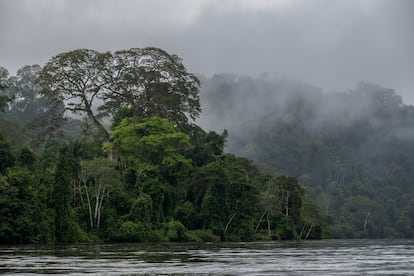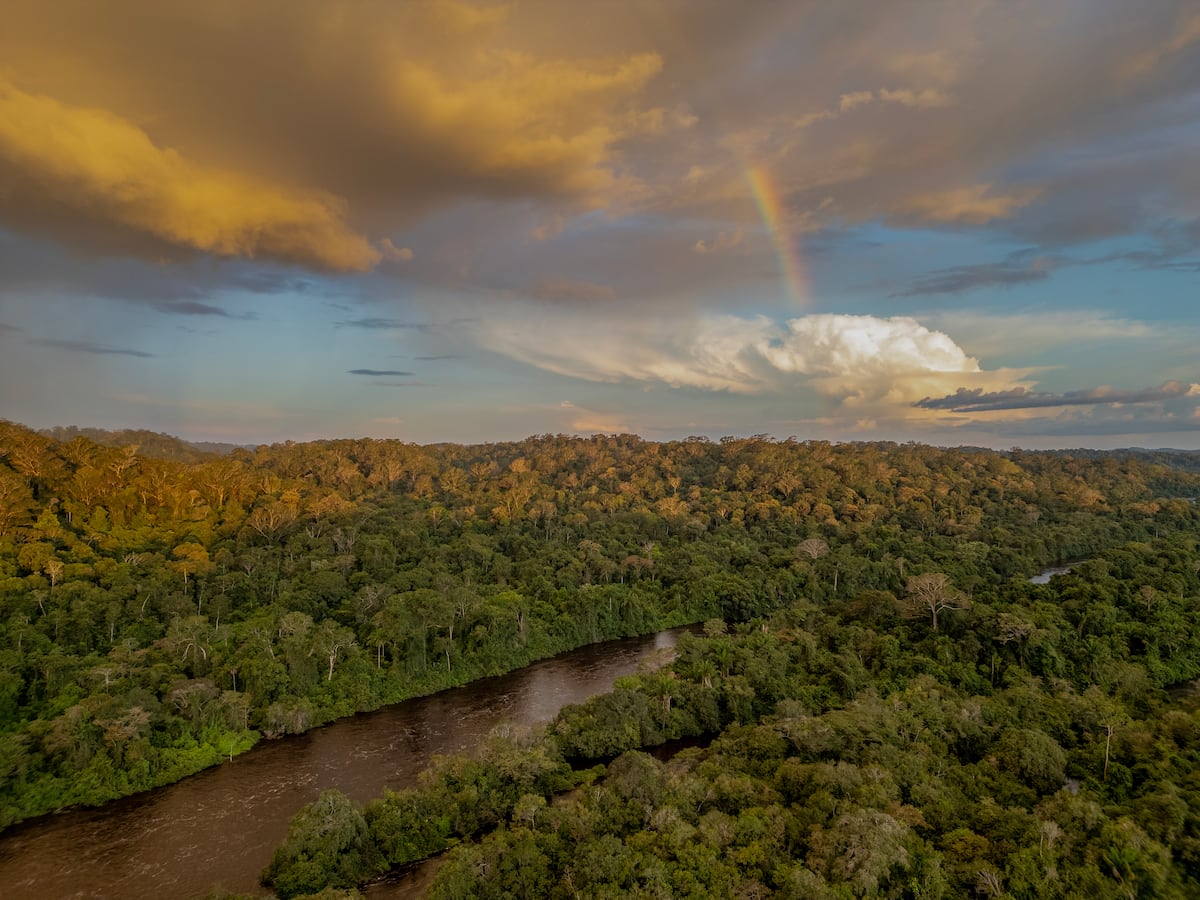Entering the Paru Rainforest Reserve, one of the most inaccessible and best preserved regions of the Amazon rainforest, is something very special even for a seasoned veteran of the Brazilian jungle: “When I got there, my eyes lit up like those of a child who saw a candy. I know other ecosystems, but this one is practically intact,” recalls forestry engineer Lucyana Santos in a video interview. Santos took part in a two-week scientific expedition last May whose goal was to reach the tallest tree in the Amazon, an Angelim Vermelho (Dinizia excelsa) with a height of 88.5 meters (twice the height of the Cristo Redentor in Rio de Janeiro, a 30-story tower), discovered five years ago in the west of the Brazilian state of Pará.
“We couldn’t reach it because a waterfall prevented us,” says the engineer, who works at the Institute of Forest and Biodiversity Development of the state of Pará (Ideflor). Research in the largest tropical forest on Earth is fraught with such difficulties: in addition to the enormous physical effort, researchers are also at the mercy of a thousand unforeseen events. Santos’ team waited three days for the water to recede to cross the waterfall, but it was useless.

Although they never reached their original destination (a previous expedition had managed to reach the 88.5-meter-high Angelim Vermelho), they discovered a new protected area of giant trees along the way. Santos and a handful of other scientists from the expedition collected samples in six plots converted into jungle laboratories, each measuring 2,500 square meters. There, she says, they took soil samples and inventoried the flora and fauna, including fish from the Jaru River and its tributaries. They observed birds and tracks of large mammals such as jaguars, without encountering them. The goal was to expand research in this reserve to increase its legal protection and ensure it is preserved in the best possible conditions. The study of the crown of the giant trees was postponed for another occasion.
The Paru reserve, which covers an area of 32,500 square kilometers (slightly less than the size of Denmark), is located 480 kilometers west of the city of Belém, which is preparing to fulfill a long-held dream of Brazilian President Luiz Inácio Lula da Silva: to bring the best climate scientists to the Amazon. Next year, Belém will host the UN climate summit COP30.
Santos explains that during the recent expedition they discovered that the giant trees are more numerous and more spread out than previously thought. It is still not known why this corner of Pará has trees that are twice as tall as the forest and the tallest in the Amazon. “We don’t know why or why here. Whether it’s due to a microclimate with specific temperature and wind conditions, whether it’s due to the ground or the proximity to the water…” The age of the trees is also a mystery: “We think they are between 400 and 600 years old, but that’s just a guess.”
38 giant trees have been identified in this area, including two that are over 80 meters tall. What is known is that these specimens play an essential role in maintaining biodiversity and ecological balance, as well as in climate regulation, thanks to their extraordinary ability to store carbon (measured by laser scanning from the International Space Station). But they are also the historical memory of the forest, a door to the past.
To reach a place where no human has ever been, these scientists must be prepared to live and work in difficult conditions. “The hardest part is the daily work, the effort of collecting information and samples on a long journey in high temperatures and humidity,” explains Santos. To reach the site, the scientists took a plane, then a car, then a boat… and then began the climb up the Jaru River to the giant tree reserve.

They were accompanied by local guides who were familiar with rivers and the jungle. And by two press advisers. And of course they had scientific material with them, water, food, medicine, GPS, binoculars, ice and chlorine to make the water drinkable when the bottled water ran out. They had to be prepared for long hikes, in sun and rain, through very dense, uneven vegetation. The climate changes often and suddenly. “You put your raincoat on, take it off, put it back on…” says Santos. The researchers slept in hammocks, protected by mosquito nets. In the jungle, even the toads are deceptive: they are beautiful but poisonous. Santos says one of her colleagues, Deisy, set up a mosquito trap because she wanted to know what the toads eat.
The engineer gets emotional as she recalls the moment when they discovered a 73-meter-high tree with a trunk diameter of three meters and another 63-meter-high tree in the middle of other very tall specimens. It is clear that without these lush trees, the ecological balance would be completely altered. The forestry engineer lists the potential damage: the river would advance, the temperature would change. If they no longer provided shade, the soil would be unprotected, large amounts of carbon could not be stored, its ecological niches would be compromised…
Protecting the giant paru trees is a top priority for the state authorities. They organized the expedition together with the Sustainable Amazon Foundation, the Andes Amazonia Fund (FAA) and the Federal Institute of the neighboring state of Amapá (IFAP).

They want the reserve to be better protected by law, so that not even the locals who currently use it sustainably – harvesting chestnuts or other fruits – are allowed to enter. The aim is to prohibit all people from entering, except for scientific expeditions. The purpose of Santos’ expedition was to collect information about the flora and fauna in the giant trees’ protected area in order to highlight why the reserve needs better legal protection at the public hearings on the subject that will be held in Monte Dourado, the municipality where the reserve is located.
Register for our weekly newsletter to get more English-language coverage from EL PAÍS USA Edition

